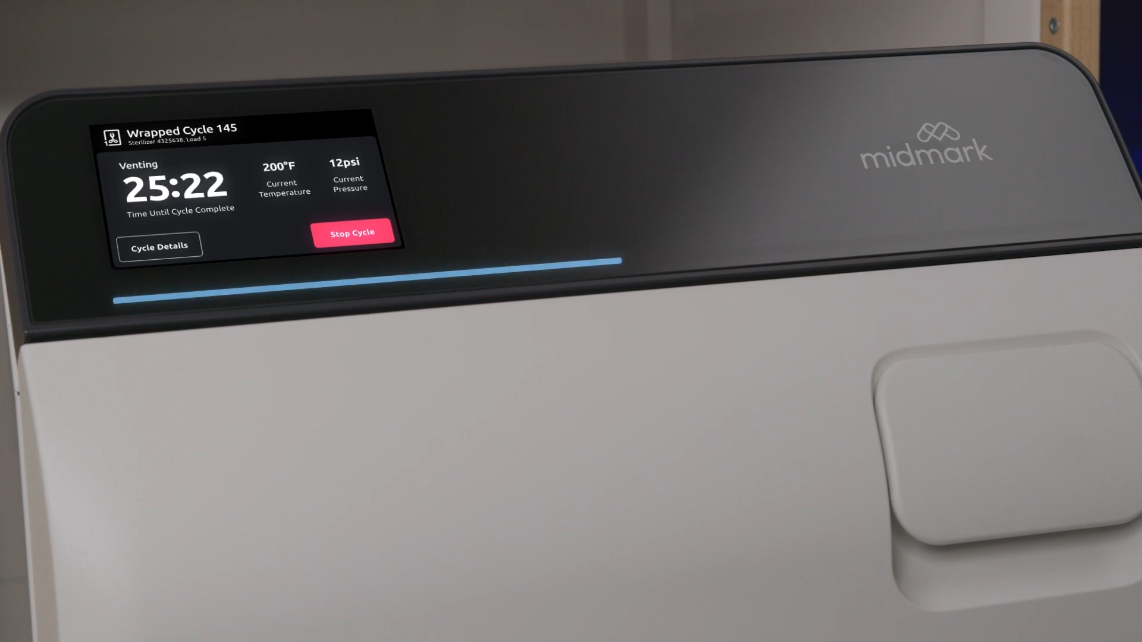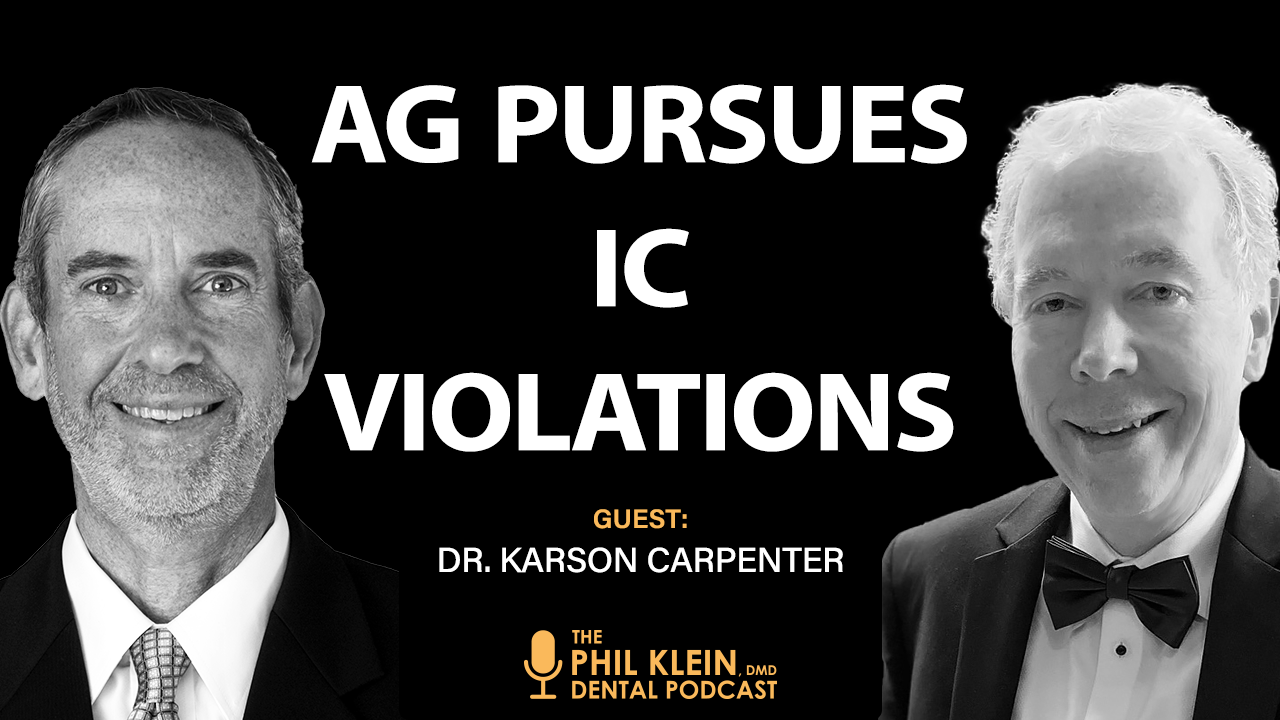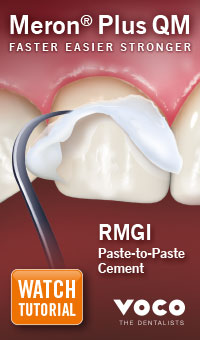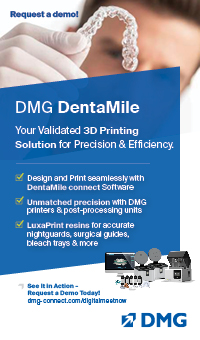
Waterline Contamination Risks and How Autoclave Automation Helps Keep You Compliant and Protected

Infection control in dentistry has evolved from a set of recommended guidelines to legally mandated requirements with serious consequences for non-compliance. As regulations become more stringent and diagnostic capabilities advance, dental practices face unprecedented accountability for maintaining sterile environments. The stakes have never been higher.
Amanda Hill, RDH, a nationally recognized infection control expert who calls herself "the waterline warrior," brings critical insights about two areas where technology can transform your practice's infection control protocols: dental waterline safety and sterilization documentation. Her expertise reveals how automation isn't just convenient—it's becoming essential for practice protection.
The Hidden Danger in Your Dental Unit Waterlines
Dental waterlines represent one of the most overlooked infection control risks in modern practice. "Waterline safety has unexpectedly become my passion," Hill explains. "It's really something that wasn't on many of our radars, but we have states now coming in and regulating testing. So it's not even just guidelines anymore."
The risks are far more serious than many practitioners realize. When water contains more than 500 colony-forming units per milliliter (CFU/mL)—the EPA regulatory maximum for drinking water and CDC-recommended maximum for routine dental treatment [1]—patients face infection risks from dangerous pathogens, including:
- Pseudomonas – Can cause serious respiratory and skin infections
- Legionella – The causative agent of Legionnaires' disease
- Mycobacterium abscessus – A particularly resistant organism causing severe infections
Real Consequences from Contaminated Waterlines
The medical community's improved diagnostic capabilities now allow definitive tracing of infections back to their source. "Medicine's gotten so good now that they can get the DNA of the infection and go back to the waterlines and be like, 'Whoa, this is the same DNA,'" Hill notes. "They can tie it that easily."
The consequences for affected patients extend far beyond simple antibiotic treatment:
- Permanent structural damage – Loss of jaw structure and teeth
- Facial disfigurement – Lasting cosmetic complications
- Hearing loss – Side effects from aggressive antibiotic treatments
- Life-altering infections – Chronic health impacts requiring ongoing care
Legal and Financial Ramifications
Hill's experience as an expert witness reveals the serious legal exposure practices face. In one Virginia case, she consulted on a child who developed an infection directly traceable to contaminated dental unit waterlines. The case settled quickly once the practice's lack of testing protocols became evident during depositions.
"The moment the assistant was being deposed and the lawyers asked, 'When was the last time you tested your waterlines?' and the assistant was like, 'I don't know,' the dentist immediately realized what was happening, and this case settled fast," Hill recalls.
These settlements typically include non-disclosure agreements, meaning the true prevalence of waterline-related infections remains hidden from public view. "I think there's more cases than we know," Hill observes.
Regulatory Compliance Requirements
States are increasingly mandating waterline testing rather than simply recommending it. Georgia has already implemented regulatory requirements, with other states likely to follow. The shift from guidelines to legal requirements means practices can no longer treat waterline maintenance as optional.
Essential waterline protocols include:
- Quarterly testing – The only reliable way to verify water quality
- Treatment protocols – Maintaining water at =500 CFU/mL, in line with EPA and CDC guidance
- Documentation of all testing and treatment – Critical for legal protection
- Staff training on waterline maintenance – Ensuring consistent compliance
Instrument Sterilization
When it comes to instrument processing, sterilization failures often stem from a single, seemingly minor, issue: wet packs. Hill identifies this issue as one of the most common and dangerous mistakes in dental sterilization. "If something's coming out wet, it's actually not sterile," she emphasizes.
Understanding the Science Behind Wet Pack Failures
The sterilization process depends on precise conditions throughout the entire cycle:
- Steam penetration – Opens pores in packaging materials
- Sterilization phase – Eliminates microorganisms
- Drying phase – Closes packaging pores to maintain sterility
When packs remain wet, the pores in packaging materials stay open, allowing recontamination. "The paper pack—when the steam comes in, it actually opens up pores in the paper, and then the steam can come in, and then it needs to dry to close the pores back up," Hill explains.
Common Causes of Wet Pack Problems
Several factors contribute to wet pack failures:
- Overloading – Preventing proper air circulation and drying
- Cycle interruptions – Opening sterilizers before drying is complete
- Equipment malfunction – Producing inadequate heating or ventilation
[blogad]
Technology Solutions: The Midmark® Advantage
Modern sterilization technology addresses these challenges through intelligent automation and accountability features. The next generation Midmark M11® sterilizer exemplifies how technology can transform infection control compliance.
Automated Documentation Features
- The Midmark M11 automatically tracks and logs mechanical monitoring—time, temperature and pressure—to help ensure adequate conditions were met during each cycle. This sterilizer can also record the user that reviewed and confirmed cycle conditions to align with best practices.
"It records that time, that temperature, that pressure. It records when I opened it, they were dry. It records that I'm the operator," Hill explains. This comprehensive documentation can become invaluable during inspections or legal proceedings.
Built-in Quality Assurance
The system includes multiple safeguards against common sterilization errors:
- Wet pack prevention – Screen prompts to confirm pouches are dry at cycle completion
- Cycle interruption warnings – Clear alerts when cycles are stopped prematurely
- Maintenance reminders – Automated alerts for required care
- Error reporting – Immediate notification of equipment problems
User-Friendly Interface
Despite sophisticated features, the Midmark M11 maintains simplicity. "It just goes step by step by step. It's so intuitive and it's exactly how you would think to do it," Hill notes. This design can reduce training time while improving compliance.
The Power of Accountability Systems
One of the most valuable aspects of modern sterilization technology is built-in accountability. When staff members must log in and confirm critical steps, compliance improves dramatically.
Real-Time Decision Making
- The Midmark M11 can help reduce stress with these reminders for compliance best practices:Confirmation of dry packs – Prompting verification of dry contents
- Confirmation of chemical indicator results – Prompting verification of passing results
- Documentation of cycle interruption – Tracking incomplete cycles with user signoff
- Documentation of maintenance completion – Logging history of routine care
"Talk about accountability," Hill observes. "If you interrupt a cycle, it says items aren't sterile, are you sure you want to do this? And you have to sign off."
The Financial Reality of Technology Investment
While advanced sterilization equipment represents a significant investment, the cost of non-compliance far exceeds equipment expenses. Malpractice settlements, reputation damage, and regulatory penalties can devastate practices financially.
Return on Investment Considerations
Modern sterilization technology provides value through:
- Legal protection – Streamlined documentation for compliance verification
- Staff efficiency – Reduced manual monitoring and documentation time
- Error prevention – Automated safeguards preventing costly mistakes
- Staff shortage mitigation – Technology replacing functions of unavailable personnel
"Technology can be that team member that we can't find or we can't afford," Hill explains. In today's challenging staffing environment, automation becomes especially valuable.
Practice Implementation Strategies
Successful adoption of advanced infection control technology requires strategic planning and staff engagement.
Staff Training and Buy-In
Even user-friendly systems require proper training:
- Comprehensive initial training – Ensuring all staff understand new procedures
- Regular refresher sessions – Maintaining proficiency over time
- Clear protocol documentation – Developing written procedures for reference
- Accountability measures – Setting clear expectations and consequences
Maintenance and Monitoring
Technology solutions require ongoing attention:
- Regular system updates – Keeping software current and functional
- Preventive maintenance – Following manufacturer recommendations
- Performance monitoring – Regularly reviewing of reports and alerts
- Continuous improvement – Adjusting protocols based on system feedback
The Legal Standard of Care Evolution
As technology becomes more accessible and regulations tighten, the standard of care continues to evolve. Practices using outdated equipment and manual processes may find themselves legally vulnerable.
"No longer is the excuse, 'There's no way we can do this,'" Hill states. "Technology is really coming in and helping offices figure out how you can be compliant."
Courts increasingly expect healthcare providers to utilize available technology for patient safety. Practices that choose not to invest in proven safety systems may struggle to defend their decisions during litigation.
Moving Forward: Essential Action Steps
Dental practices must proactively address infection control challenges through both protocols and technology:
Immediate Priorities
- Assess current waterline testing protocols – Implement quarterly testing if not already in place
- Evaluate sterilization documentation – Identify gaps in current recordkeeping
- Review equipment age and capabilities – Determine if upgrades would improve safety and compliance
- Train staff on accountability measures – Ensure everyone understands their responsibilities
Long-term Planning
- Budget for technology upgrades – Plan for equipment that improves safety and documentation
- Develop comprehensive infection control policies – Create written protocols covering all aspects
- Establish monitoring systems – Ensure regular oversight of compliance and performance
- Stay informed about regulatory changes – Monitor evolving requirements and standards
Conclusion
Infection control in dentistry has evolved from recommended practices to legal mandates with serious consequences for non-compliance. Waterline contamination and sterilization failures can result in devastating patient injuries, substantial legal settlements, and practice closure.
Technology solutions like advanced autoclave systems provide comprehensive answers to these challenges. Automated documentation, built-in accountability measures, and real-time monitoring transform infection control from a manual, error-prone process into a reliable, defensible system.
As Amanda Hill emphasizes, "Use this technology to your advantage and allow it to help you run your practice more safely and smoothly." In an era of increasing regulation and legal scrutiny, practices that embrace proven safety technologies position themselves for success while those that don't may find themselves facing consequences they cannot afford.
The question isn't whether to invest in advanced infection control technology—it's whether you can afford not to. Patient safety, legal protection, and practice viability all depend on maintaining the highest standards of infection control, and technology makes those standards achievable for practices of every size.
























